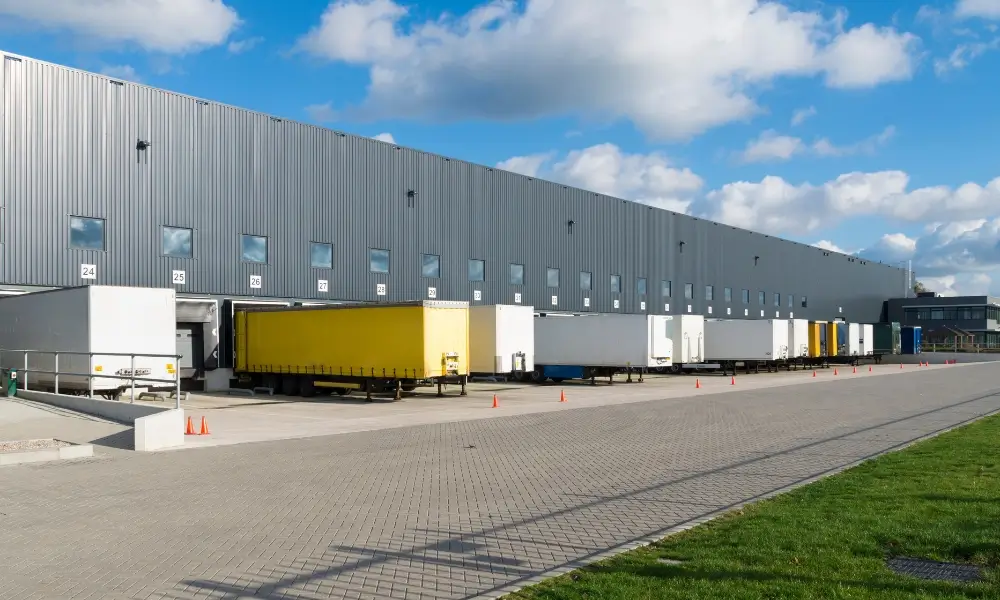In the bustling and dynamic environment of a warehouse, safety is paramount. Warehouse workers face a myriad of potential hazards, from heavy lifting and operating machinery to navigating around moving vehicles and handling hazardous materials. Ensuring a safe workplace is not just about compliance with safety regulations; it’s about creating a culture of safety that protects workers and promotes efficiency.
This blog aims to highlight 10 essential safety tips for warehouse workers, offering practical advice to minimize risks and foster a safer working environment. From wearing the appropriate personal protective equipment (PPE) to practising good housekeeping and everything in between, these tips are designed to equip warehouse workers with the knowledge they need to stay safe on the job.
10 Essential Safety Tips For Warehouse Workers
Warehouse work can be physically demanding and involves various risks, from handling heavy machinery to dealing with hazardous materials. Here are 10 essential safety tips for warehouse workers to help minimize risks and ensure a safer working environment:
1. Wear Proper Safety Equipment (PPE)
The use of appropriate personal protective equipment (PPE) is a critical first line of defense against workplace injuries. Safety helmets, for instance, protect against head injuries that can occur from falling objects or when bumping into fixed objects. Gloves safeguard hands from cuts, abrasions, and chemical burns. Eye protection, such as safety glasses or goggles, is essential for shielding the eyes from hazardous splashes, dust, and flying particles.
High-visibility clothing ensures that workers are easily seen in low light conditions and near moving vehicles or equipment, reducing the risk of being struck. Steel-toed boots offer protection for the feet from crushing injuries and punctures. Each type of PPE is designed to mitigate specific risks, and selecting the right PPE for the task is crucial.
2. Stay Aware of Your Surroundings
Maintaining constant awareness of the surroundings in a warehouse is vital for avoiding accidents. This includes being vigilant about the movement of heavy machinery like forklifts and cranes, which can pose significant risks if one is not paying attention.
Awareness also extends to potential slip and trip hazards, such as spills on the floor or objects in walkways. By staying alert, workers can anticipate and avoid hazards before they lead to accidents.
3. Use Machinery and Tools Properly
Safe operation of machinery and tools is fundamental to warehouse safety. Workers should only use equipment they are trained and authorized to operate. Adhering to operating instructions and safety procedures, including lockout/tagout protocols, helps prevent unintended machine startups during maintenance, thereby avoiding potential injuries.
Proper use also means performing regular checks and maintenance to ensure that equipment is in good working condition.
4. Lift Properly
Ergonomic lifting techniques are essential to prevent back injuries, one of the most common workplace ailments. Proper lifting involves bending at the knees, keeping the back straight, and using the legs to lift, which reduces strain on the back. For heavy or awkward loads, using mechanical aids or seeking assistance from a coworker is advised to minimize the risk of injury.
5. Keep Work Areas and Emergency Exits Clear
A clean and organized workspace is key to preventing accidents. Keeping areas free of clutter reduces the risk of tripping and makes it easier to move safely around the warehouse. It’s also crucial to ensure that emergency exits are not obstructed, allowing for a quick evacuation in case of an emergency.
6. Follow Proper Storage Procedures
Proper storage of materials helps prevent accidents, such as items falling from shelves. Heavy items should be stored at lower levels, and materials should be stacked securely to prevent them from toppling over. This not only protects workers from potential injuries but also helps in maintaining an orderly warehouse environment.
7. Handle Hazardous Materials Safely
Working with hazardous materials requires understanding and following specific safety procedures. This includes knowing how to properly use PPE, as well as how to store, handle, and dispose of these materials safely. Proper training in handling hazardous materials is essential to prevent exposure to substances that could cause health issues.
8. Report Unsafe Conditions
A proactive approach to safety includes reporting potential hazards to supervisors. Whether it’s damaged equipment, a spill that hasn’t been cleaned up, or unsafe practices by coworkers, bringing these issues to the attention of management can prevent accidents and injuries.
9. Participate in Safety Training
Regular participation in safety training sessions and drills ensures that workers are up to date on the latest safety practices and emergency procedures. This education can make a significant difference in preventing accidents and responding effectively in emergency situations.
10. Practice Good Housekeeping
Regular cleaning and maintenance of workspaces are crucial for preventing slips, trips, and falls. Promptly cleaning up spills, keeping aisles and passageways clear, and properly disposing of waste and debris help maintain a safe working environment. Good housekeeping is not just about cleanliness; it’s an integral part of workplace safety.
Conclusion
In conclusion, adhering to these 10 essential safety tips can significantly reduce the risk of accidents and injuries in the warehouse, creating a safer and more productive working environment. By wearing the appropriate PPE, staying vigilant about surroundings, properly using machinery and tools, lifting correctly, keeping areas clear, following storage guidelines, safely handling hazardous materials, reporting unsafe conditions, participating in safety training, and practising good housekeeping, warehouse workers can protect themselves and their colleagues.
Embracing these practices not only promotes individual well-being but also fosters a culture of safety that benefits everyone involved. Safety in the warehouse is a shared responsibility, and by working together, we can ensure a secure and efficient workplace for all.

